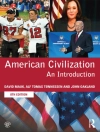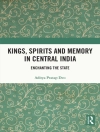Peruvian Foreign Policy in the Modern Era is a chronological treatment of Peruvian foreign policy from 1990 to the present. It focuses on the impact of domestic politics, economic interests, security concerns, and alliance diplomacy on contemporary Peruvian foreign policy.
In common with other Latin American states, sovereignty, territorial integrity, regionalism, continental solidarity, and economic independence were core goals of Peruvian foreign policy after independence. In modern times, successive Peruvian governments have continued to address these and related issues in a foreign policy grounded in pragmatism and notable for its emphasis on a rational combination of continuity and change. The Fujimori administration (1990–2000) set the stage for this shift in the direction, tone, and content of the nation’s foreign policy with successor administrations refining and building upon the initiatives launched by Fujimori.
Table of Content
List of Figures; Acknowledgments; Abbreviations; 1. Introduction; 2. Alberto Kenya Fujimori, 1990–2000 and Valentín Paniagua Corazao, 2000–2001; 3. Alejandro Celestino Toledo Manrique, 2001–2006; 4. Alan García Pérez, 2006–2011; 5. Ollanta Humala Tasso, 2011–2016; 6. Pedro-Pablo Kuczynski Godard to Francisco Rafael Sagasti Hochhausler, 2016–2021; 7. José Pedro Castillo Terrones to Dina Ercilia Boluarte Zegarra, 2021–2023; 8. Conclusions; Works Cited; Index
About the author
Ronald Bruce St John first conducted research in Peru in 1968 and since then has published several monographs on the Andean region, including The Foreign Policy of Peru (1992), Toledo’s Peru: Vision and Reality (2010), and Bolivia: Geopolitics of a Landlocked State ( 2020).












